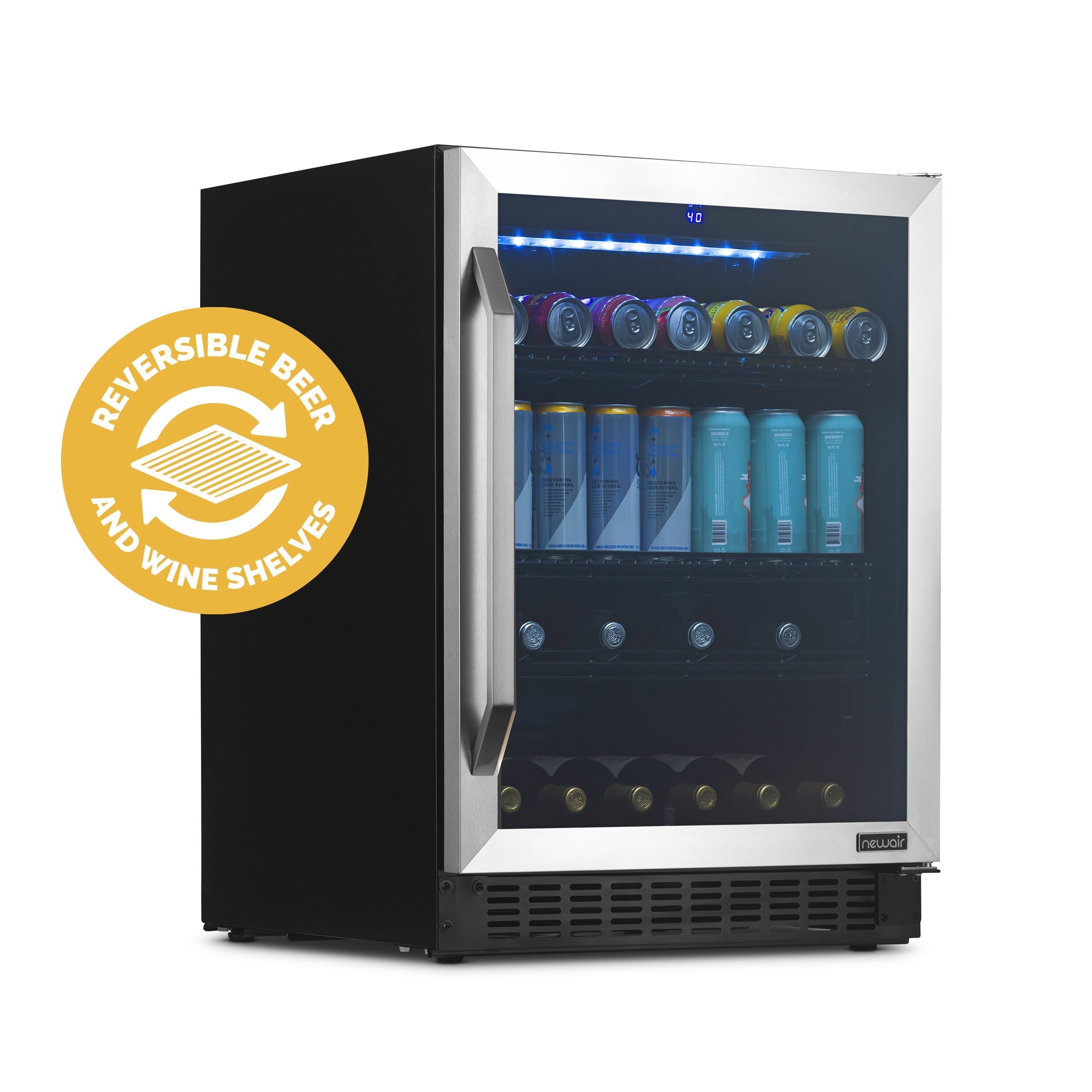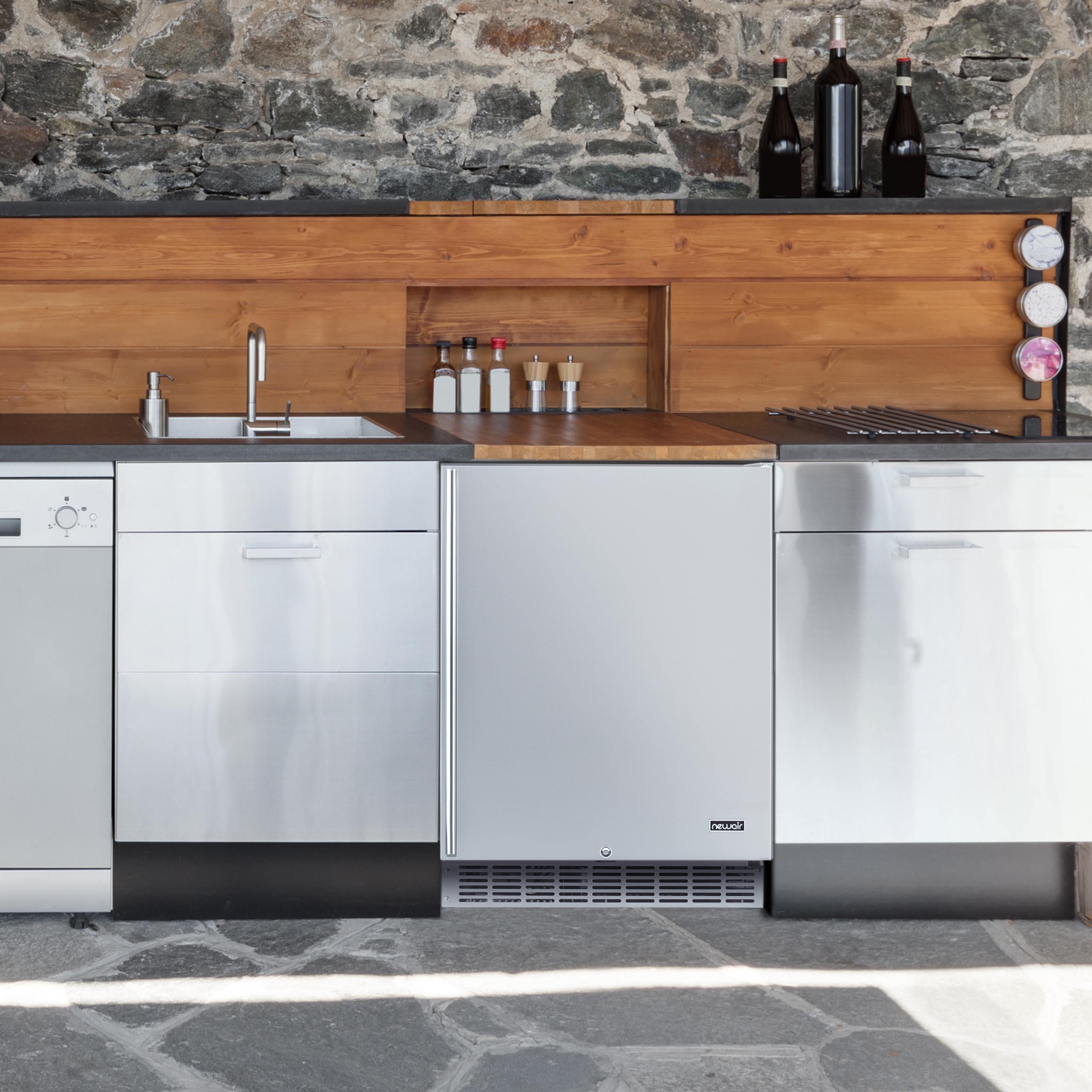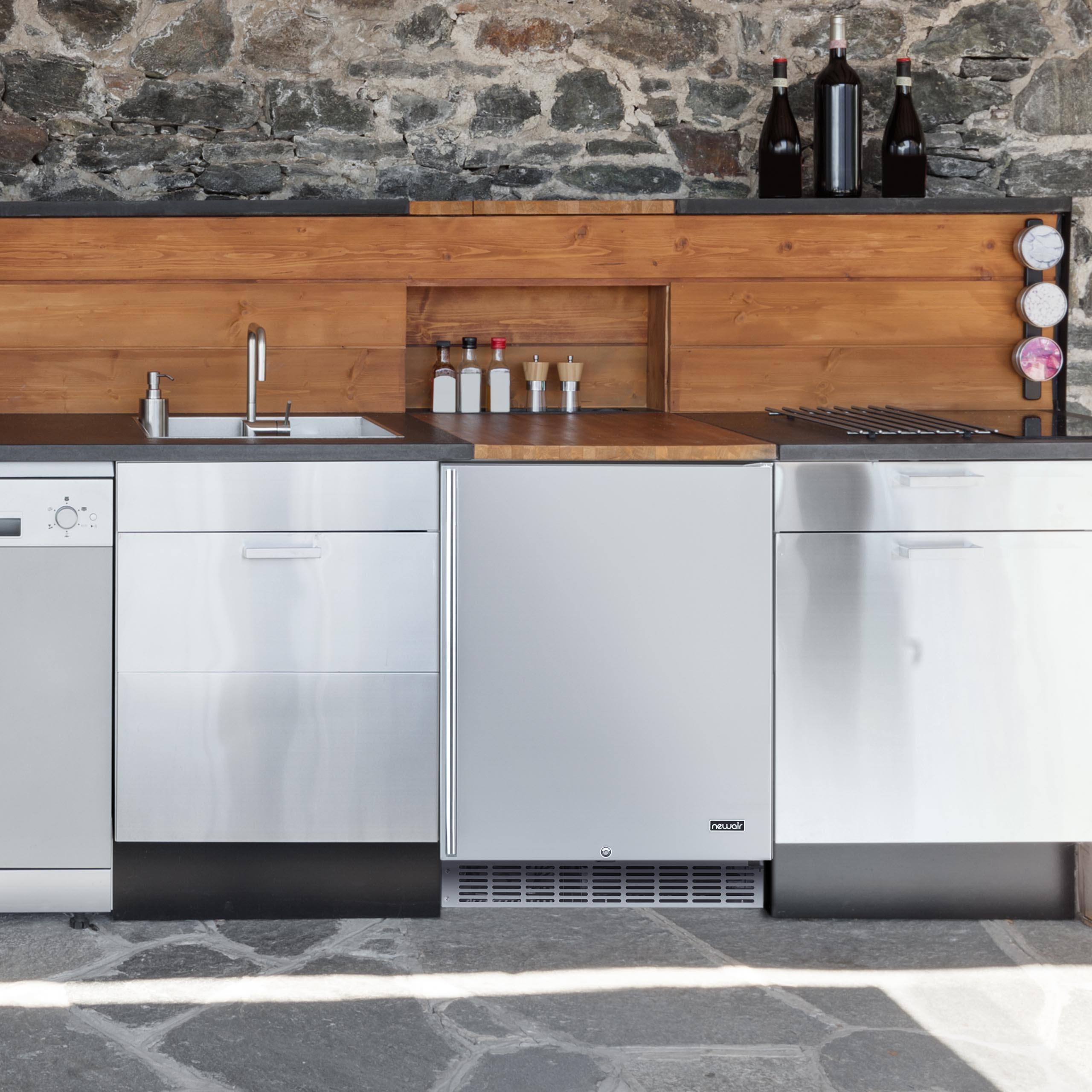Beer Basics: How to Store Beer the Right Way
Craft beer fans can spend whole afternoons earnestly discussing different varieties of hops and the perfect flavor profile to pair with a chargrilled burger, but what about beer storage? While this topic may not be as sexy as cracking open a fresh Belgian or imperial stout and reviewing its taste, it’s fundamentally important if you hope to get the best flavor — and the longest shelf life — out of your collection of cans and bottles. Whether you love microbrews or are a die-hard macro lager drinker, knowing how to store your beer will make your drinks last longer and taste better when you’re ready to open them.

Though passionate beer aficionados have always had strong opinions on the care and keeping of ales, storing beer doesn’t have to be difficult. Once you understand the basics, you’ll have all the information you need to put together the perfect beer cellar — which, it turns out, might not even need to be in your basement at all.
Here’s what you should know about best practices for long-term storage so your beer tastes just as great next week, month or year as it does today.
Know Your Enemies
Because beer is an organic substance— that is, it’s a product made from living things like grain and herbs — it will eventually spoil. That’s just the way the world works. In particular, there are three main beer killers to avoid when you store your collection:
- Light, which causes a chemical reaction that changes the aroma and flavor
- Heat, which can cause active yeast — or worse, bacteria — to multiply too quickly
- Oxygen, which will age the beer in both color and flavor — and not always in a good way
If you control for these three variables as your beers age, you can keep them crisp and tasty for much longer. In general, beer is meant to be drunk fresh rather than aged, which makes it unlike wine in nearly all instances. Most fresh beer is labeled with a "sell by" or "best by" date, which reflects the manufacturer’s idea about when you’ll experience peak flavor. However, properly stored beer can last for up to two years beyond that recommended date and still taste perfectly fine.
UV Protection

Believe it or not, the most important rule of beer storage is to keep it in a dark place. This is because sunlight is responsible for one of the most notorious beer spoilages: the dreaded skunk taste. Skunked beers — also known as light struck beers — have a distinctive aroma when you open them. They exactly smell like a skunk’s spray. If you can stand to get close enough to drink it, you’ll notice off flavors, too.
Skunking is caused by a chemical reaction that occurs when the volatile compounds in hops are broken down by direct sunlight. The delightful bitter flavors are broken apart into other chemicals, one of which is exactly the same as the chemical found in skunk spray. Your skunked beer doesn’t just smell like skunk — it actually has a bit of the same offensive substance in it.
For this reason, it’s crucial to keep your beer — from European strong ales to American lighter beers like Coors and Budweiser — in the dark. This is especially important for beers that come in clear glass bottles. Green and brown bottles act a bit like sunglasses to offer some protection, but it’s a good rule of thumb to keep all your beer in a dark location.
Temperature
When it comes to the right storage temperature for beer, the Goldilocks rule is in full effect: not too hot, not too cold, but just right.
If your beer gets too hot, it ages far more quickly than it should, and you’ll end up with off-flavors. Heat encourages the growth of bacteria, which can lead to musty flavors or bitter, sour or acrid tastes that will render your brew undrinkable. Warm temperatures also wreak havoc on unfiltered and unpasteurized beers, which still have live, active yeast in them. When temperatures rise, the yeast will multiply rapidly, which can lead to an explosive situation as your beverage become over carbonated. It can also alter the alcohol content and overall flavor of these beers.
On the other hand, keeping your beer cold to the point of freezing is also a no-no. Frozen beer is likely to explode thanks to the increased pressure in the can or bottle, and that will lead to a real mess — as well as the total loss of your beer. Even if you are able to rescue a partially frozen beer before it detonates, you may have altered the flavor. That’s because the water will freeze before the alcohol, and you’ll end up with a higher alcohol content if you pour off the ice and drink the remaining beer. All that air pressure can also dislodge the bottle cap, which can allow oxygen to seep into your beer and have it go flat, too.
For best results, keep your beers in a cool place. Room temperature in the typical American house won’t quite cut it — what you’re looking for is about 50 to 55 degrees Fahrenheit. If your finished basement or cellar temperature is unreliable, a dedicated refrigerator for beverages is your best option. A beer fridge allows you to select the perfect temperature year round for successful long-term storage.
Position

One of the trickier questions about beer storage methods has to do with the position of the bottles on the shelf or in the fridge. Unlike wine, beer bottles should be kept in an upright position whenever possible, because upright storage reduces the amount of oxygen that can get to your beer. When you keep your beer upright, the narrow bottle neck allows only a tiny portion of the beer to come in contact with the air in the bottle. This reduced surface area cuts down on oxygenation, which ages beer. Oxygenated beer tastes odd; it’s often described as having a flavor like wet cardboard or buttered popcorn.
Upright storage is especially important for unfiltered beers, as they will still have the remains of the yeast and perhaps other sediment in them. If you tip the beer onto its side for storage, you’ll allow the dregs to float up and create a large yeast ring around the side of the bottle. When you do bring the bottle back upright for drinking, the yeast will mix with the beer, clouding your drink and reducing the overall taste experience.
Humidity

The relative humidity of your beer storage area is only important if you’re a fan of corked beers. Whether home brewed or made in small batches, these special beers use a natural cork to stop the bottle instead of a metal cap. Cork creates a seal by expanding against the glass bottle, but it’s important to remember that cork only expands when it’s properly humidified. When conditions are too dry, cork shrinks, which can leave a gap in the seal. This, in turn, can cause your beer to go flat or allow bacteria and oxygen to seep in and ruin your beer.
Unfortunately, relative humidity decreases as temperatures decrease. That means that your standard kitchen refrigerator is too cold to store a corked beer, since these are typically set at 38 degrees Fahrenheit. Conditions at these temperatures are often too dry for corks and can be disastrous. Keep your corked beers in a dedicated refrigerator set for 55 degrees, and you’ll find that the relative humidity is also higher and easier on your corks.
The Worst Place to Store Your Beer
Now that you know what the beer experts have to say about ideal storage conditions, it’s easy to see how you shouldn’t keep your beer. Keeping beer on the kitchen counter beneath a sunny window is both too warm and too bright, and will lead to a rapidly deteriorating product. It’s also not a great idea to keep your beer in ice buckets outside — they’ll be chilled way below their ideal temperature for drinking, and they’ll still be exposed to harmful UV rays. Putting your beer in the freezer for a quick cool-down is also a famously terrible idea — if you forget about them, they’ll explode.
Invest In A Beer Fridge

Your best bet for cellaring beer to keep it delicious for several months? Invest in a well-designed beverage fridge that allows you to set the temperature (and the resulting relative humidity) in the 50s. Look for flexible shelves that allow you to store your bottles in an upright position. The ideal beer fridge will also feature special light bulbs that limit UV rays and doors that filter out sunlight to protect your drinks from skunking.
Whether you’re in love with hoppy pale ales, are experimenting with vintage beers or just want to crack open a cool, refreshing drink after a long day at work, knowing how to store your beer to protect it from the elements will ensure that you have a great drinking experience, no matter what your beer preference.
LEARN MORE:
NewAir Beer Fridges
- Chills beer and soda to your desired temperature
- Roomy design stores your brews with ease
- Adjustable beverage racks provide custom organization





0 comments